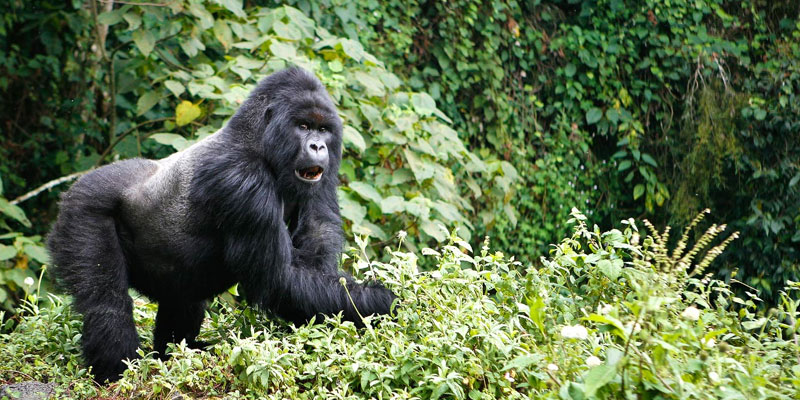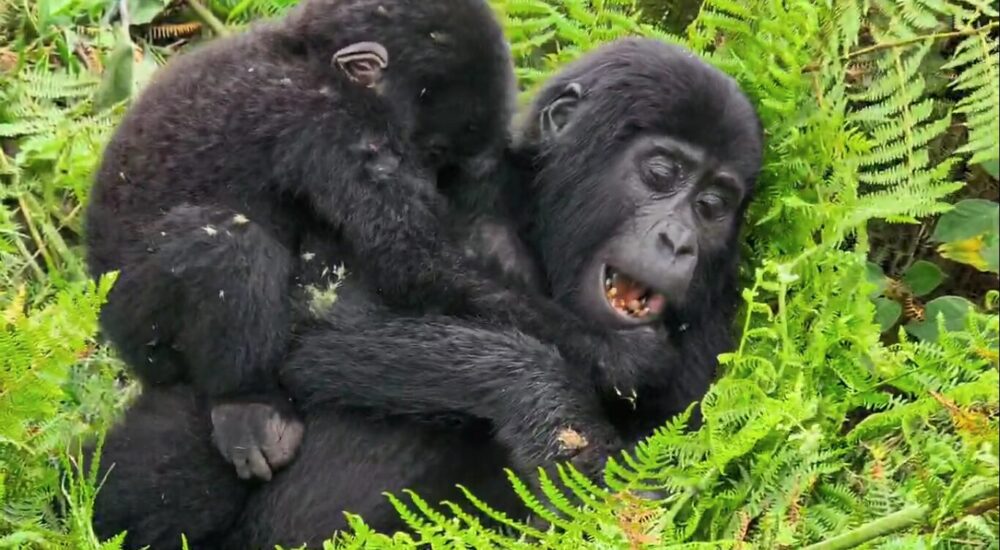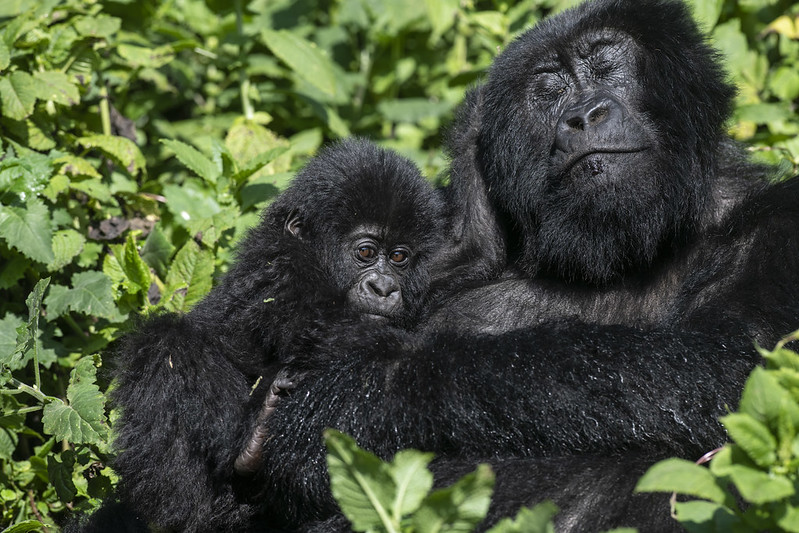Explore the importance of eco-friendly gorilla trekking and how it supports conservation and uplifts communities…
Carnivores and predators in Uganda.
Carnivores and predators in Uganda introduces you to the many species found in Uganda’s national parks. A carnivore is a creature that primarily consumes meat or animal flesh. It is an animal that does not eat other creatures because it needs to, but because it was born to do so! Carnivores, sometimes known as predators, play an important role in the food chain. Uganda is home to a profusion of carnivorous animals, totaling 38 in all. There are seven felines (such as lions and leopards), five canid species (such as wild dogs and foxes), ten mongooses (such as the banded mongoose), six mustelids (such as badgers and otters), three hyenas (such as spotted and striped), and seven viverrids (such as genets and civets).![]()
Uganda is home to five big carnivores: lions, leopards, hyenas, cheetahs, and African wild dogs. An examination of these five species reveals that, whereas many were common only 50 years ago, most are now limited to protected regions, and populations are dropping even inside these protected areas. Golden cat (Felis aurata), serval (Felis serval), side-striped (Canis adustus), golden (Canis aureus), and black-backed jackals (Canis mesomelas), ratel (Ratel ratel), mongooses, otters, and genets are among the smaller carnivores present in the nation. Lions and other large carnivores are among the most popular ecotourism attractions in the nation. They are among the most significant species that spring to mind when people think about Africa’s wildlands. They are also among the most endangered animals in Africa due to human conflict.
Carnivores serve several important functions in the country. Some of these jobs are social in nature, while others are biological and beneficial to the ecology. Carnivores have cultural significance and have been employed as emblems in various kingdoms. Carnivores are known to manage the amount of angulates in the environment, keeping it healthy and balanced. Many projects are ongoing to restore and preserve them due to their great value and cultural significance.
Carnivores and predators in Ugandan National Parks
The composition of treasure between tall trees and broad meadows is a definition of what one should anticipate on an African safari; the lions, leopards, hyenas, and cheetahs within grasslands and forests make a color wheel that spice up the events and beauty of any safari. There are primarily four national parks in Uganda where these carnivores or large cats may be easily sighted. Lake Mburo National Park, Queen Elizabeth National Park, Kidepo Valley National Park, and Murchison Falls National Park are among them. The parks are peppered with a variety of carnivorous creatures that feed on a greater variety of food. The majority of big carnivores live in low-density communities of less than 150-200 individuals. Cheetahs and wild dogs have a population of no more than 20 individuals. Visitors may see lions displaying survival tactics by racing after antelopes, which also have the task of fleeing and staying safe.
According to the Uganda Wildlife Authority, huge carnivores are a component of any community’s culture on Earth. Whether it’s African village legends about lions, hyenas, and leopards or European fairy tales about wolves and bears. They transmit a place’s ‘wildness,’ and their presence is typically a sign that an ecosystem is healthy, as they are often the first species to become extinct. Large carnivores in Africa, particularly in the savannas of Eastern and Southern Africa, are a popular tourist attraction, attracting people from all over the world. Some of Uganda’s carnivores and predators are listed below.
Lions.
The lion (Panthera leo) is one of the “Big Five” animals that live in the natural landscapes and ecosystems. Lions are incredibly lovely to look at because of their power, strength, and legend. While on a safari, lions are frequently spotted moving in prides, although they may also be sighted alone, in which case they may have been chased away from the pride, particularly the older males. According to a recent research, a single lion could produce an estimated US$ 13,500 in tourism income for the country per year.![]()
Where to Look for Lions in Uganda
Uganda has ten national parks, although not all of them have lions. Murchison Falls National Park, Queen Elizabeth National Park, and Kidepo Valley National Park are home to the majority of lions. There is also a lone lion at Lake Mburo National Park, although it is rarely spotted. There are also allegations that Semliki possesses lions, albeit they are rarely observed. Many individuals who are interested in discovering carnivores and predators in Uganda come to see tree lions.
Leopards
The African leopard (Panthera pardus pardus) has been observed in Sub-Saharan Africa. They are secretive and prefer to stay alone, making them difficult to spot when on safari. They are also primarily nocturnal, spending the majority of the day resting in trees, tall grass, and other regions where they are difficult to identify. However, seeing leopards is an unforgettable experience that many people aspire to repeat. Leopards may be identified from cheetahs by their skin’s rosette-shaped tips. Cheetahs have spots, but leopards have rosettes. A cheetah’s spots are individual solid round or oval black patches that cover its whole body. Leopards, on the other hand, have a more complicated pattern made up of rosettes, which are irregularly shaped spots that are joined together to form rose-like patterns. Cheetahs may be identified by the black “tear” line that runs down their face. This line extends from the inner of the eye to the cheetah’s mouth.
![]()
Where to Look for Leopards in Uganda
Leopards may be found in the national parks of Murchison Falls, Kidepo Valley, Queen Elizabeth, Lake Mburo, Kidepo, and Semliki. Other parks are claimed to contain fewer leopards than Queen Elizabeth Park. Leopards have also been spotted in the Buligi circuit section of Murchison Falls National Park and the Ajai wildlife reserve.
Cheetahs
Cheetahs (Acinonyx jubatus) are known as the fastest terrestrial animals. They resemble leopards and are thought to be the most diurnal of Africa’s cat species. Cheetahs catch their prey by outrunning them in the wild, yet their incredible speed cannot be sustained over extended distances. Because to impediments in the path and animals’ meandering running patterns, pursuing speed may be substantially decreased. Impalas and other antelopes are examples of the prey they often graze on. Small animals and birds may also be included in the diet. These cheetahs are more active during the day, which helps them minimize competition since they lose part of their kills owing to kleptoparasitism.
![]()
Some data suggests that nocturnal activity is tied to the moon cycle, which is consistent with the concept that the need to employ visual signals to avoid competition is a significant driver of diurnal action. Male cheetahs are extremely territorial, and they frequently defend their territory in pairs or trios in some places. Cheetahs are the weakest of the major predators: they are chased from many of their victims, and 50% of cheetah babies are killed by other predators before they reach the age of three months. Cheetahs, like leopards, are richly spotted and solitary, but their greyhound-like frame, pronounced black tear-marks, and predilection for grassland and savanna environments rule out misunderstanding.
Cheetahs are virtually solely found in Uganda’s Karamoja area, near Kidepo National Park, where an estimated 53-310 animals have been reported.
Wild dogs
Although the African wild dogs are thought to be extinct in Uganda, the Conservation Through Commercialisation (CTC) in Butambala reported that they had acquired a couple from South Africa.
Hyenas.
The spotted hyena (Crocuta crocuta) is the most frequent big carnivore in Africa, according to the Afrian Wildlife Foundation. Sub-Saharan Africa’s population is estimated to be between 27,000 and 47,000 people. These scavengers are nocturnal, yet they are still very simple to detect on a Uganda safari. Spotted hyenas hunt in groups of 2-5 and can run for many kilometers after prey. Because of their extraordinarily powerful jaw, they can eat nearly everything in addition to carcasses. Their bodily form is characterized by a relatively massive size, short torsos, lower hindquarters, and a sloping back. The body is covered with a light-brown coat with dark-brown markings.
Spotted hyenas are often known as laughing hyenas because to the strange barking noise they produce. This sound is designed to warn other pack members of a prospective food source. The roar is believed to be heard up to three kilometers distant. These are some of the carnivores and predators in Uganda that you will encounter on your Uganda safari.
In Uganda, where can you observe spotted hyenas?
Lake Mburo, Queen Elizabeth, Murchison Falls, and Kidepo National Parks are the greatest sites to see these species. Kidepo National Park is home to the elusive striped hyena (Hyaena hyaena) and the insectivorous Aardwolf (Proteles cristatus).
The aforementioned are some of the carnivores and predators in Uganda that you will encounter on your Uganda safari.


